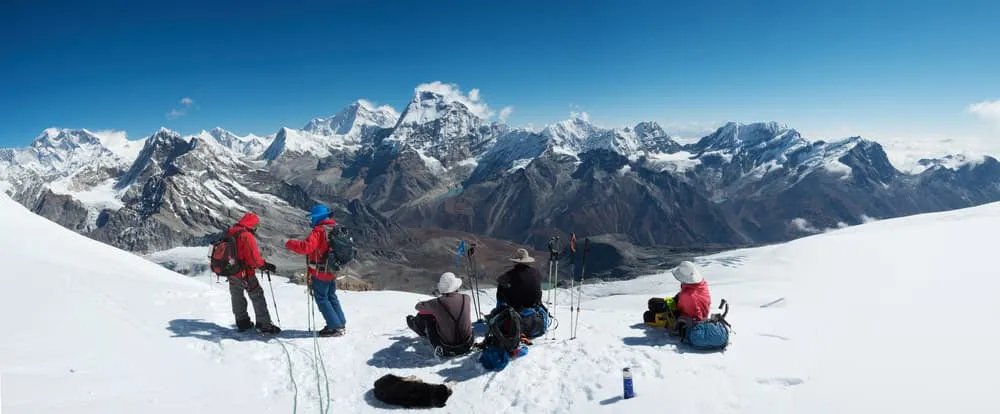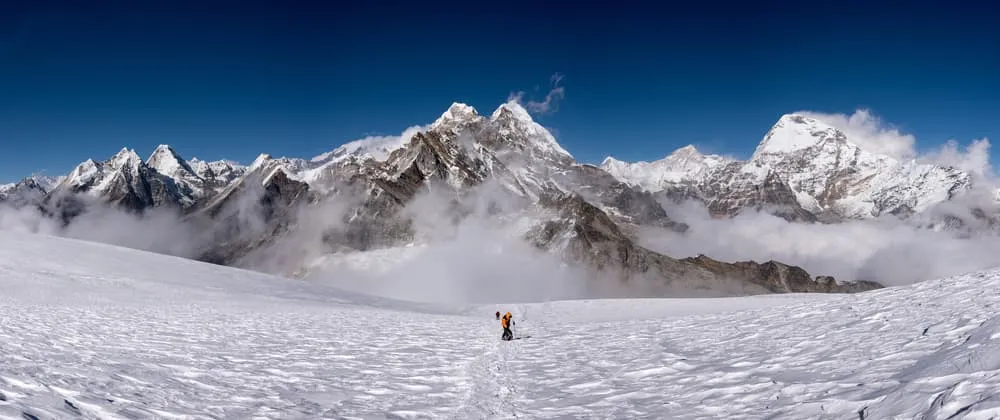The best season to climb Mera Peak in Nepal is generally during the pre-monsoon (spring) and post-monsoon (fall) periods. The two main climbing seasons are:
1. Spring (Pre-Monsoon)
- March to May is considered the best time to climb Mera Peak
- The weather is relatively stable, and temperatures are milder.
- The skies are clear, offering excellent visibility and stunning views of the surrounding peaks.
- The climbing conditions are generally more favorable during this season.
2. Fall (Post-Monsoon)
- September to November is another popular season for climbing Mera Peak.
- The weather is stable, and the skies are clear after the monsoon season.
- The temperatures are cool, making it a comfortable time for trekking and climbing.
- The views are excellent, and the autumn colors add to the beauty of the landscape.
During these seasons, the weather is typically more predictable, and the chances of encountering snow and ice conditions are minimized. Climbing during the monsoon season (June to August) is not recommended due to heavy rainfall, difficult trekking conditions, and increased avalanche risk. It's important to note that the Mera Peak weather conditions can still vary, and climbers should be well-prepared for changing circumstances.










Comments